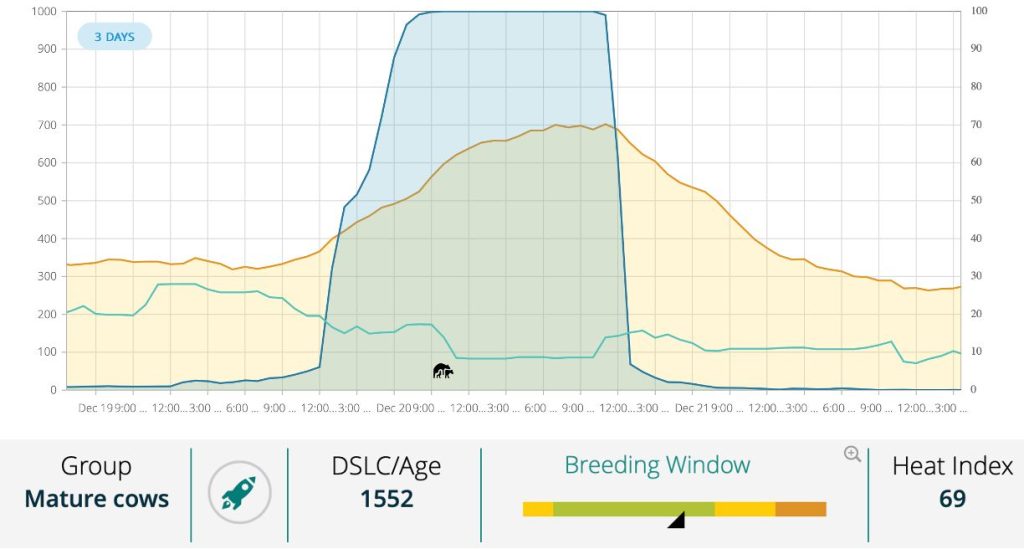By Shannon Beck

Researchers at the University of Missouri’s Southwest Research, Extension and Education Center (SW-REEC) are bringing 21st-century technology to the pasture. By outfitting beef cattle with smart ear tags, researchers hope they can help producers pinpoint the ideal time for breeding — blending traditional livestock know-how with cutting-edge innovation.
“It’s like a smartwatch for a cow,” said Cecilia Constantino Rocha, assistant research professor in the Division of Animal Sciences based at the SW-REEC. “You have your smartwatch to monitor your steps and heart rate. This is the same, but instead of steps, it’s tracking lots of movement patterns associated with activity, , grazing, and rumination.”
Certain head movements — such as when a cow lowers its head to graze grass or moves it head while chewing its cud — can offer insight into the animal’s energy intake. The smart tag, similar in technology to a fitness tracker, is attached to the cow’s ear and sends real-time data directly to the rancher’s phone.
Researchers believe this data can reliably indicate when a cow is entering estrus, or heat, a critical window for successful breeding. Constantino Rocha is leading a project to test the accuracy and efficiency of these sensors, while her colleague Jordan Thomas, assistant professor in the Division of Animal Sciences, is applying the technology to a study aimed at better using sex-sorted semen in beef herds.
“One of the most exciting things about this tech is that it has potential applications both in research and on farms and ranches,” Thomas said. “Cecilia’s work will help cattle producers know whether these technologies could improve their results with things like artificial insemination or embryo transfer. And at the same time, these tools gives us precise, consistent data for academic research.”
So far, the tags appear to detect estrus with accuracy comparable to traditional methods, but with one major advantage: precise timing. That precision could help producers inseminate cows during the optimal time window, improving conception rates and reducing wasted time and resources.
Unlike older methods that require producers to physically check on each animal, these SenseHub tags send automatic alerts when a cow enters estrus. That instant feedback can make the difference between successful breeding and a missed opportunity.
“This technology could mean more calves, fewer missed heats, and better outcomes for producers,” Constantino Rocha said.
Access to such advanced tools reflects the University of Missouri’s land-grant mission and commitment to serving the state’s agriculture industry, Thomas added.
“We’re one of the only universities with this technology available for use in beef cattle, and it shows a real investment in quality beef cattle research,” he said.
Constantino Rocha’s position is another part of that investment. She’s the first animal sciences researcher based at one of the university’s research, extension and education centers — a network of research farms across the state.
“The biggest advantage I have being here is direct access to ranchers,” she said. “Southwest Missouri has the largest concentration of cattle ranchers in the country. I’m able to hear directly from them — what they need, what they’re struggling with, and how we can help.”
Located just outside Mt. Vernon, Mo., the SW-REEC specializes in cattle reproduction, silvopasture grazing systems, and research on Missouri specialty crops like elderberries, persimmons and grapes.
Source : missouri.edu